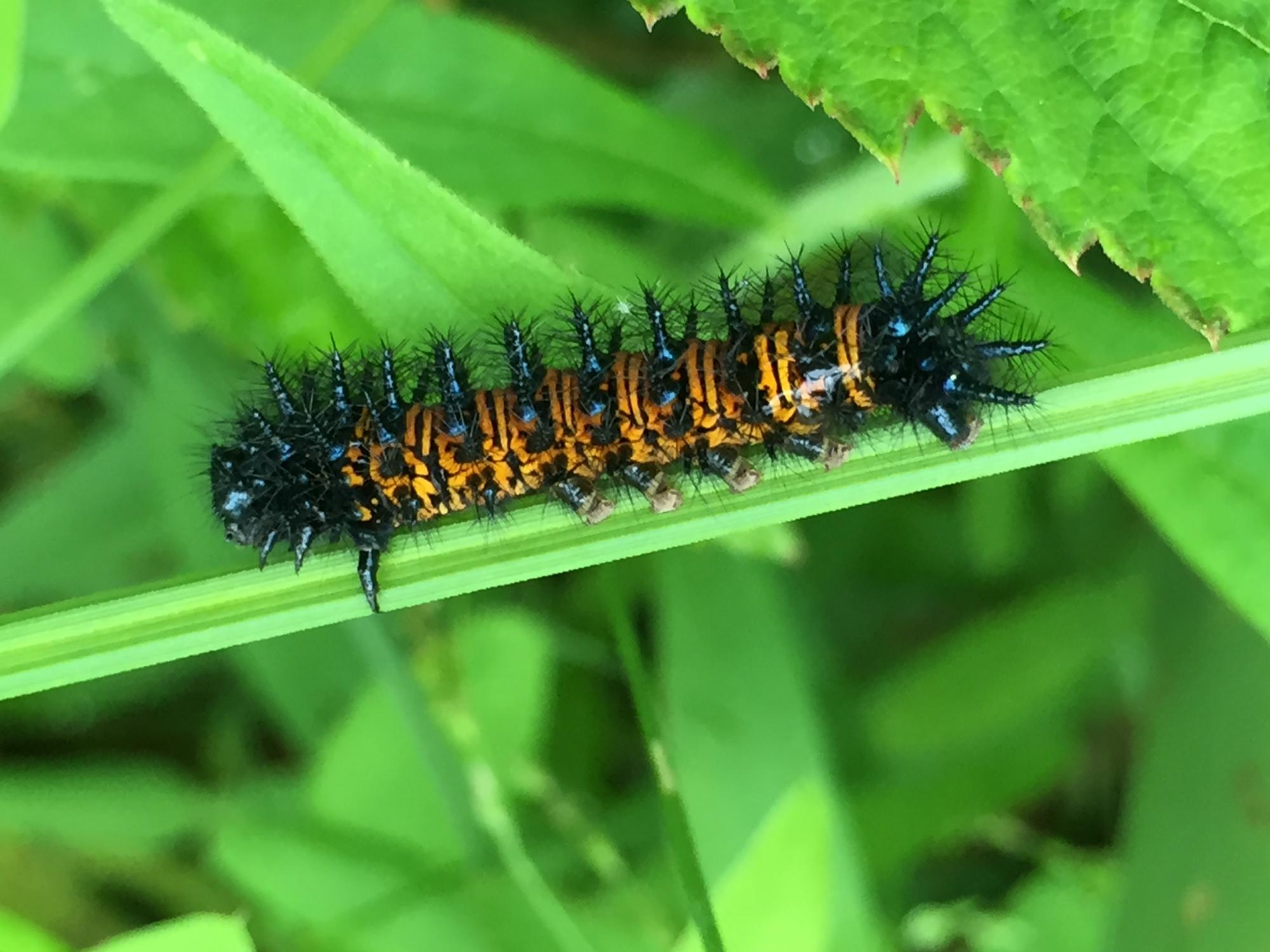Butterfly caterpillars
This is a Silvery Checkerspot caterpillar, photographed at Creekside Reserve in Beavercreek. These caterpillars often feed gregariously (in large groups) on wingstem and related plants.
This is the caterpillar of our most common butterfly, the Cabbage White. This species feeds on cruciferous vegetables. This particular caterpillar was photographed in a mixed vegetable/flower garden. It had apparently wandered away from its host plant onto some nearby chrysanthemums.
This is the easily-recognizable Monarch butterfly caterpillar, feeding on its host plant, milkweed. Monarchs ingest toxins from the milkweed, making them poisonous to predators such as birds.

Baltimore Checkerspot caterpillar. This butterfly species is rather uncommon and restricted to good-quality wetlands, where their primary host plant, white turtlehead, grows. (Later instars can also use other plants besides white turtlehead.) I found this particular caterpillar at Siebenthaler Fen on May 21, 2016.
This caterpillar will transform itself into an American Lady butterfly. American Lady caterpillars are sometimes darker than this individual, but some are a beautiful ruby-red color. Photographed at Sweet Arrow Reserve, near Bellbrook.
This is a Viceroy caterpillar, feeding on willow. These caterpillars are bird-dropping mimics. (Note that the Red-spotted Purple caterpillar is extremely similar. These two species are difficult to tell apart in the larval stage. There are minor differences in the spines and horns, and it can be helpful to note the host plant.)

A pair of Question Mark butterfly caterpillars. I found these caterpillars feeding alongside the Great Miami River in Miamisburg.